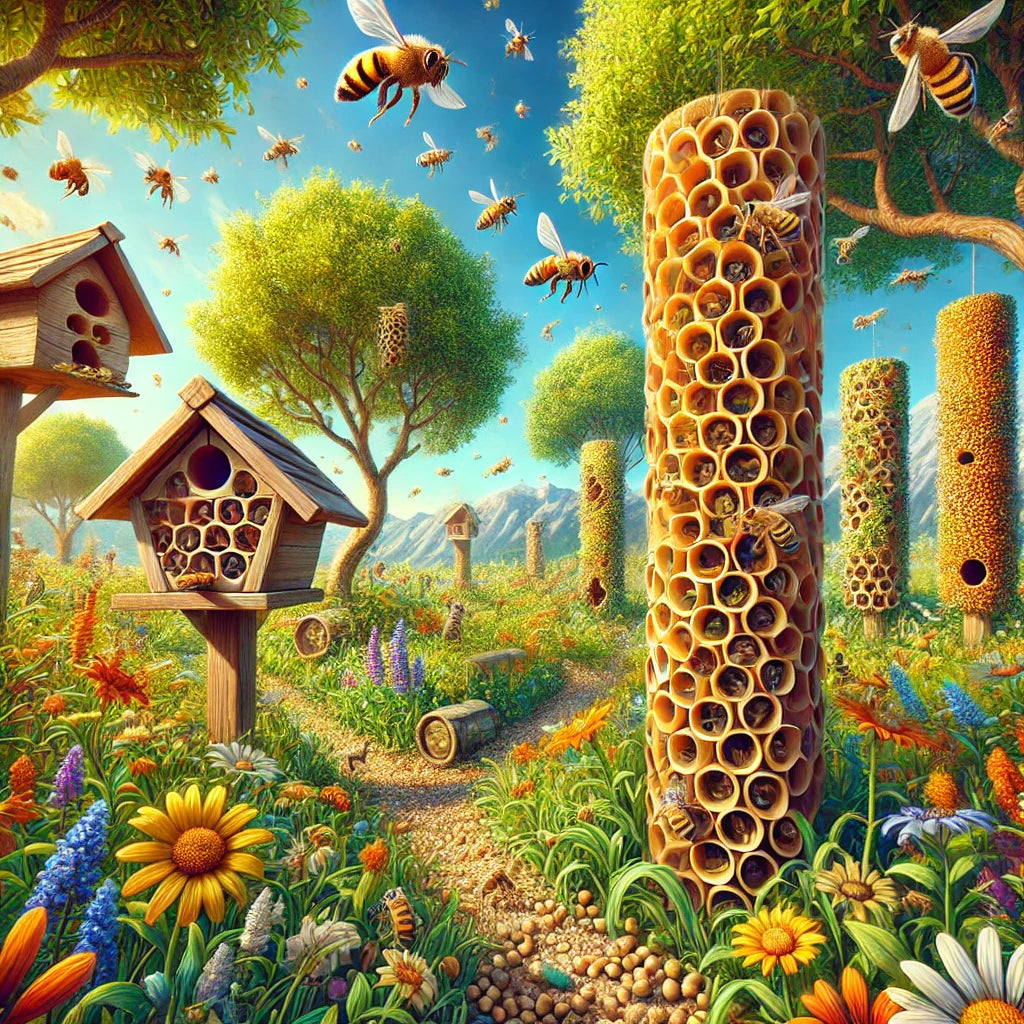Mason bees are excellent pollinators for gardens, known for their solitary nature and effective pollination abilities. When it comes to providing a safe nesting environment, many gardeners use artificial mason bee houses. However, a healthier and more natural option is to use hollow stems as bee houses.
This article will explain why hollow stems are better than toxic man-made houses and how you can encourage bees to thrive using natural materials.
The Problem with Toxic Mason Bee Houses
Artificial mason bee houses may seem like a convenient solution for providing homes to these pollinators, but they often come with hidden dangers. Over time, these houses can become breeding grounds for pathogens like pollen mites and parasites.
If not properly maintained or cleaned, diseases can easily spread between bees, reducing the population. Additionally, many pre-made bee houses use materials treated with chemicals, which can harm both the bees and the surrounding ecosystem.
Why Hollow Stems Are Better
Using hollow stems as natural bee houses provides a solution that closely mimics what bees would naturally choose in the wild. Plants like elderberry, sunflowers, and teasel provide hollow stems that mason bees can use to build their nests. Here’s why they are better:
- Natural Spacing: Unlike artificial bee houses, which often cluster nesting tubes too close together, natural stems are spread out. This reduces the chances of disease and makes it harder for predators, like parasitic wasps, to attack.
- No Chemicals: Hollow stems are free of harmful chemicals, providing a safe, toxin-free environment for bees to lay their eggs.
-
Sustainability: As hollow stems decompose naturally over time, they help maintain a healthy cycle of habitat renewal, reducing the need for human intervention.
.
How to Grow Hollow Stems for Mason Bees
To create a natural bee-friendly environment, you can plant certain species that produce hollow stems. Some great options include:
- Elderberry
- Sunflowers
- Blackberry
- Goldenrod
At the end of the season, cut the stems to around 12–18 inches and leave them upright in your garden. These stems will naturally attract mason bees and other cavity-nesting species. As the bees begin to nest, the upright hollow stems will provide them with a safe, natural environment.
The Life Cycle of Mason Bees in Hollow Stems
Mason bees go through several life stages, from laying eggs to emerging as adults the following year. By providing them with natural hollow stems, you support the entire life cycle of bees. Each female bee will lay her eggs in the hollow stems, building individual chambers separated by leaf or mud partitions. The bees will emerge the following spring, ready to pollinate your garden..
Benefits of Supporting Bees with Natural Habitats
Supporting mason bees with hollow stems offers numerous benefits:
- Improved Pollination: These bees are highly effective pollinators, helping to boost the health and yield of your garden.
- Eco-Friendly: By using natural stems, you reduce reliance on artificial materials and encourage a healthy garden ecosystem.
-
Reduced Maintenance: Unlike artificial bee houses, hollow stems don’t require regular cleaning or replacement. They decompose naturally, providing a self-sustaining habitat.
.
Support Your Garden with Swarm Commander
Choosing hollow stems over artificial mason bee houses provides a healthier, more sustainable environment for your garden's bees. By mimicking their natural nesting preferences, you help support the important role bees play in pollination while reducing the risks associated with man-made structures.
Looking to create the perfect bee-friendly environment? Visit Swarm Commander for tools like beetle traps for beehives, bee trap attractants and resources on how to start a bee farm or bee hive relocation. Visit Swarm Commander to start enhancing your garden’s pollinator habitat today.
Frequently Asked Questions About Mason Bees
Q1. Why are hollow stems better for mason bees?
Hollow stems mimic the bees' natural nesting sites, reducing the risk of disease and eliminating exposure to toxic chemicals.
Q2. How can I create a bee-friendly environment with hollow stems?
Plant species like elderberry and sunflowers, then cut their stems at the end of the season and leave them upright for bees to nest in.
Q3. Do mason bee houses need to be cleaned?
Yes, artificial bee houses require regular cleaning to prevent the spread of disease, while hollow stems naturally decompose over time.
Q4. How do mason bees build their nests in hollow stems?
Female mason bees lay their eggs in the hollow stems, separating each chamber with leaves or mud, providing a safe environment for their larvae.
Q5. What are the benefits of using hollow stems for bee habitats?
Hollow stems reduce disease spread, are chemical-free, and support sustainable gardening practices. They also provide natural, low-maintenance nesting sites for bees.



